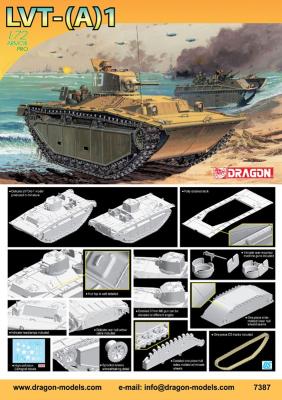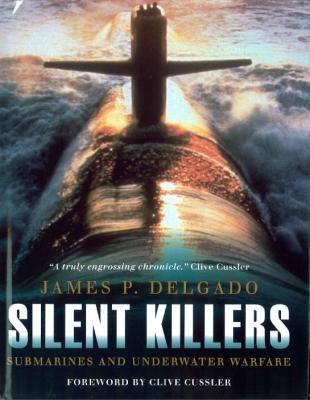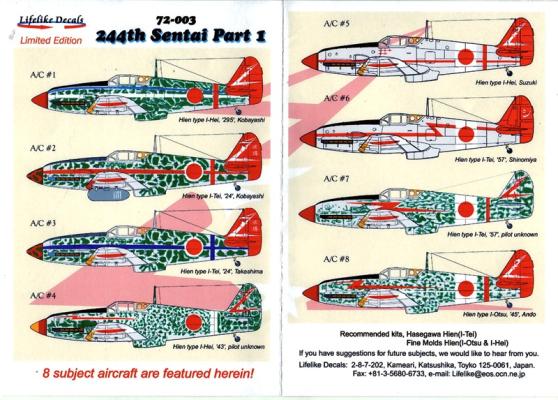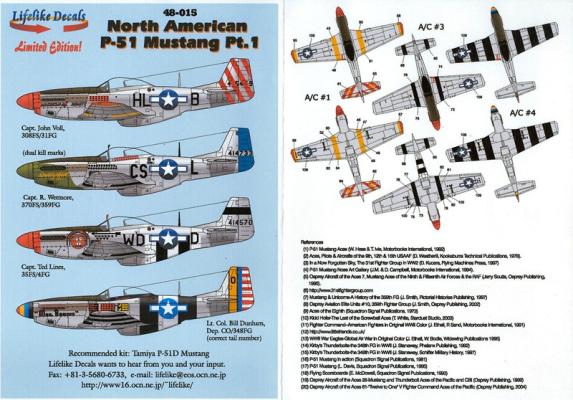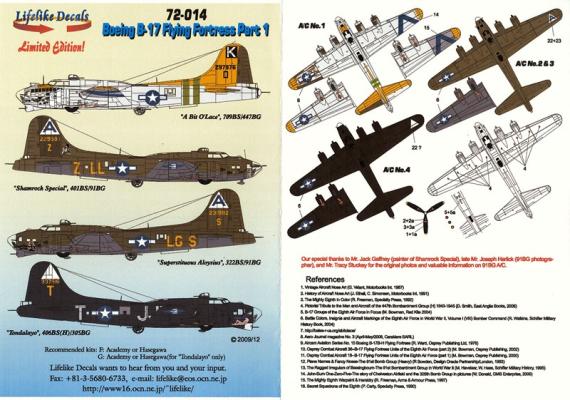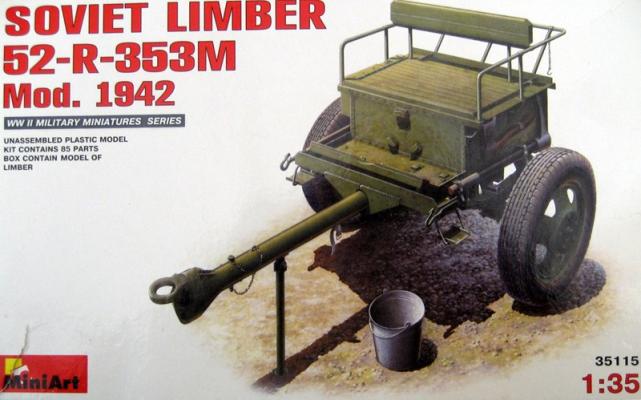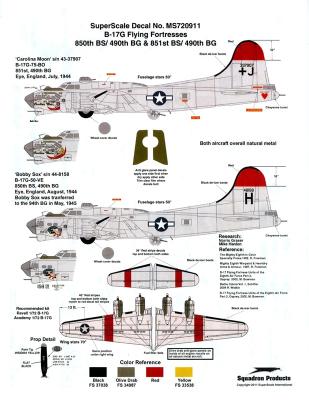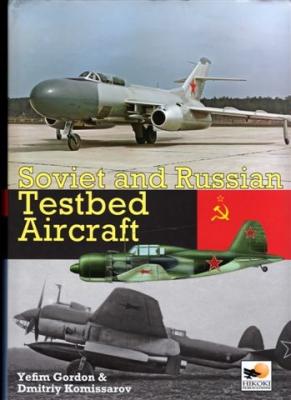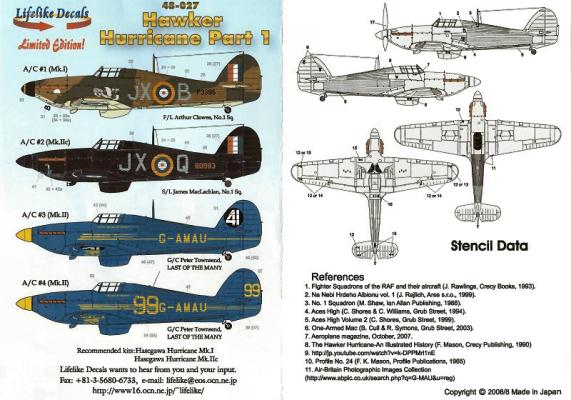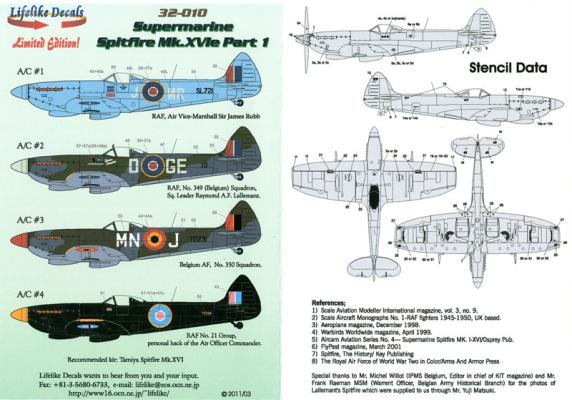The LVT-(A) 1 was part of a series of US Marine Corps. and Navy amphibious assault vehicles developed during WW2. The idea for the military vehicles came from an original, civilian design by Donald Roebling, who designed his Alligator as a rescue vehicle for use in areas inaccessible to standard cars or trucks, such as swampland. LVT stood for Landing Vehicle, Tracked, and the main contractor during WW2 was FMC: Farm Machinery Corp. As well as the standard open topped tracked landing craft designed to bring troops and cargo ashore, there were also vehicles such as the LVT-(A) 1 which came completely enclosed, and armed with turrets. The LVT-(A) 1 (“A” for Armor) had the turret and gun of the M3 Stuart light tank, and the vehicle was also powered by an M3 Stuart engine. Just over 500 (A) 1’s were produced during the War, with a total of just over 18,000 LVT’s of all varieties eventually rolling off the assembly lines.
What's New
Although I am a former carrier sailor, I have had a long-standing appreciation for submarines and underwater warfare, from the pioneers and early craft to the latest technology afforded to the submariners of today. It takes something special in a person to go out to sea in a vessel designed to sink, and built by the lowest bidder (I had to get that one in), but those who have answered the call in the past, and those will do so in the future, are nothing less than courageous. The submarine has been in existence in one form or another for centuries, and similar to any other weapon of war, has developed into something that would astound the early inventors.
Lifelike Decals have recently provided some of their products for review. They produce a wide range of 1/72, 1/48 and 1/32 scale decals for WW II fighters and a couple of B-17s. This sheet is the first of three sheets covering 244 Sentai aircraft. I am sure that most modelers are familiar with the red tailed Ki-61 Tonys of this group. This sheet covers eight different aircraft including a couple of natural metal birds. Five of them are aircraft of aces. The aircraft of this Sentai included a great variety of fuselage stripes and bands. This sheet provides all of that material for the various schemes. The level of detail includes two slightly different colors of blue to properly recreate the individual markings. The directions also provide details for the props and landing gear doors. A single set of national insignia Hinomarus are provided however these are available with the kits.
Lifelike Decals has produced a 1/48thscale Mustang sheet for four aircraft that I have not seen before, except “American Beauty, possibly. I’m certainly no expert on every decal sheet that has been previously released, but they all look new to me. The instruction sheet says they are designed for the Tamiya kit. All four aircraft are natural metal, with three of them from the European Theater and one from Okinawa.
The first aircraft is P-51D-15-NA flown by Captain John Voll of the 308thFS in Italy in 1944. These markings are for his aircraft after his 21stkill in November of 1944.
Captain Raymond Wetmore’s P-51D-10-NA, “Daddy’s Girl” at the time when the aircraft was being repainted, and the kill markings were being moved from the canopy frame to the fuselage.
It seemed that there was a great surge in the release of 1/72ndscale B-17 decals as a result of the release of Revell’s B-17G, so you would think this decal sheet was a result. However, that’s not true. Life like’s release is based on the Minicraft and Hasegawa kits, and one of the bonuses you receive is a sheet with the scale drawings of the placement of the cabin windows on the real aircraft, the Minicraft kit and the Hasegawa kit. After looking at it, you have to wonder how the model makers arrived at their finished product.
There are four aircraft provided on three separate sheets. All of the markings are extremely thin, with little or no excess decal film. The artwork for the nose art is very crisp and in sharp detail.
Since 2003, when MiniArt released their first kit, they have become quite a diverse company with kits ranging from figures to tanks, with most of their emphasis on designing kits, to enhance or stand alone, for dioramas.
Squadron Products has released a new sheet that is perfect for Revell’s 1/72ndscale B-17G. Both of the aircraft on this sheet are natural metal. “Carolina Moon” is a B-17G-75-BO assigned to the 851st BS/490thBG, stationed in Eye, England, July 1944. ‘Bobby Sox” is a natural metal B-17G-50-VE assigned to the 850thBS/490thBG at Eye, England in August 1944, which was later transferred to the 94thBG in May 1945.
This is a very large book covering Soviet and Russian test and research aircraft from the late 1930s to modern times. The book contains eight separate chapters of varying lengths devoted to specific areas of research and testing. The Russians and Soviets have developed many interesting designs over the years and this book gives us a look at some of the most unusual.
The Hawker Hurricane was credited with 60% of the RAF's air victories and played a critical roll in the Battle of Britain. More than 14,000 Hurricanes were built and they fought in all the major theatres of the Second World War. They served as fighters, fighter-bombers, and ground support aircraft and for a period of time the main single seat night fighter in the RAF.
If you don’t already have a Tamiya 1/32ndscale Spitfire Mk XVI, this decal sheet might be enough to make you want one. This set of decals offers markings for four Mk XVI Spitfires operating during 1946 to 1948. SL721 is the aircraft of Air Marshall Sir James Robb, Commander of the Fighter Command Communications Squadron in Northolt during 1948. The powder blue overall finish is supposedly a mixture of PRU blue and white. It is a unique looking Spit and quite attractive.
The second offering is TB900, a MKVI flown by Squadron Leader Raymond A.F. Lallemant of RAF No. 349 (Belgium) Squadron, based in Fassburg, Germany in 1946. It is RAF Dark Green/Ocean Gray/Medium Sea Gray with Sky codes.
Spitfire MkXVIe TD231 is also from Fassburg, Germany in 1946, but it is of the 350 Squadron, Belgium AF. It is camouflaged in RAF Dark Green/Ocean Gray and Medium Sea Gray with white codes. The red, yellow and black Belgian roundels are what set this aircraft off.

